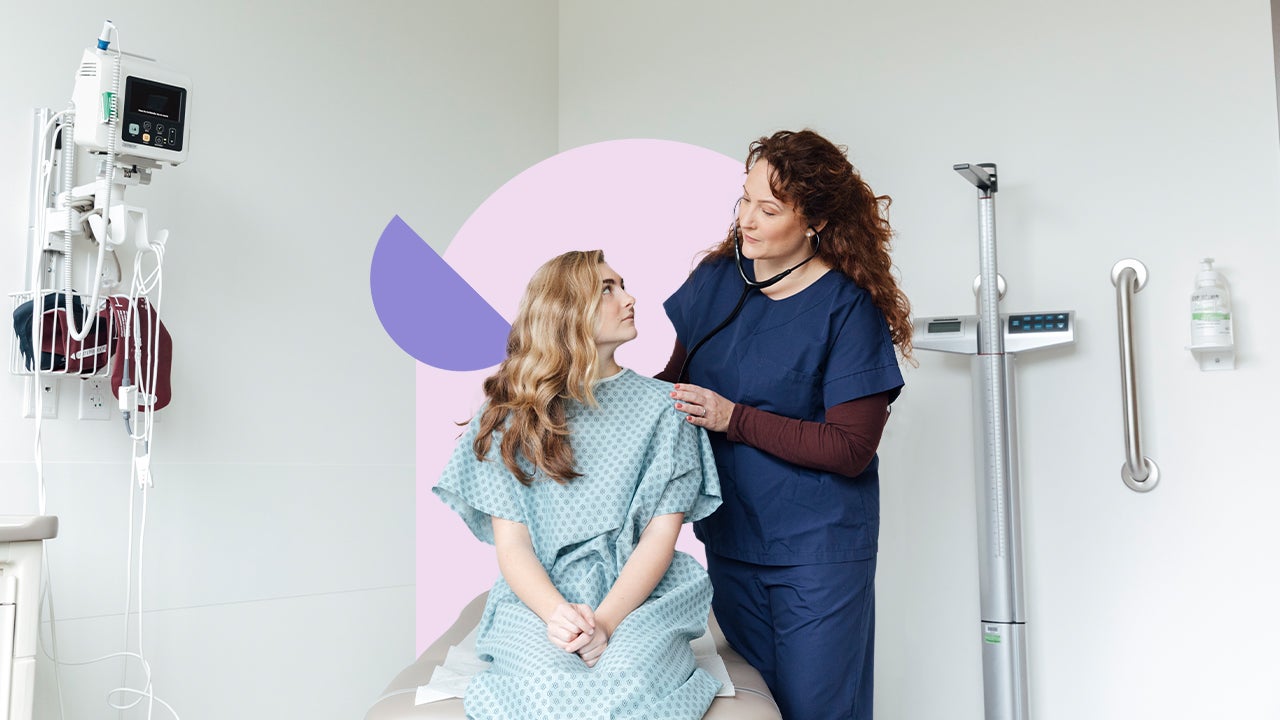How to pay huge medical bills on a small income




Key takeaways
- Review medical bills for errors and confirm coverage with your insurance provider before paying.
- Medical service providers may be willing to offer discounts or arrange interest-free payment plans.
- Financial assistance, loan programs and lines of credit can help you cover the remainder of the bill.
- If medical debt becomes overwhelming, you may want to consider more drastic measures, such as debt consolidation or bankruptcy.
According to the Kaiser Family Foundation (KFF) Health Debt Survey, 41 percent of American adults have debt relating to medical or dental care. Around 14 million Americans, or six percent of the adult population, owe more than $1,000 in medical debt, while approximately 3 million Americans owe more than $10,000.
While thousands of dollars of medical debt is untenable for most people, it’s particularly overwhelming for those living on a small income. A large medical bill can potentially wipe out your emergency savings fund and leave you with larger payments than you can afford.
Some steps can help people pay huge medical bills on a small income. With these medical debt management tips, you can climb out from under that debt.
1. Confirm the charges are accurate
Billing mistakes are shockingly common. A recent CFBP (Consumer Financial Protection Bureau) advisory mentions double billing, bills exceeding legal limits, falsified or fake charges and other problems with medical bills. This could mean you owe less than you were charged.
Get an itemized bill for any medical services you receive. Review your explanation of benefits (EOB) forms and billing statements to confirm the services. If you notice unauthorized services, duplicates or medical codes you’re unfamiliar with, call the hospital or medical provider’s billing office to discuss your concerns and request an adjustment to your bill.
You may even want to call the billing office to ask them to review the charges with you. Simply making them explain the charges could help them recognize an error that you wouldn’t have caught. It’s also a good idea to get familiar with the No Surprises Act and what it says about in-network and out-of-network bills.
2. Ask about a discount and negotiate the payment amount
Once you’ve confirmed the amount you owe, contact your medical provider’s billing office and ask for a discount. You may be able to negotiate reduced fees for services, especially if you remit payment in a lump sum or offer to pay in full within a 30- or 60-day period.
If you haven’t yet received services and are worried about costs, contact the medical provider’s office now to express your concerns. You could get a reduced rate that’s slightly more affordable by simply asking for a discount.
Consider referencing the Healthcare Blue Book before negotiating. This publication includes average service costs for hospitals and doctors nationwide, which can help you negotiate for lower rates more effectively.
3. Set up a payment plan
If you cannot afford to pay the medical bill in full, request a payment plan from your provider. Many medical providers offer interest-free payment plans that allow patients with limited incomes to stretch out the payments over an extended period.
These plans can be structured in a number of ways. The provider may, for example:
- Ask you to choose a payment amount that works for your budget.
- Request financial information to create an income-based hardship plan. This type of plan may result in a portion of your medical debt being forgiven.
- Offer a flat-rate discount if you agree to pay a substantial portion of the bill up front.
Interest-free payment plans only work if you have the means to uphold your end of the bargain. If you cannot commit to the repayment plan, you may want to look for another solution.
4. Appeal to your insurance company
Medical debt isn’t just about the charges; it’s also about how much of those charges your insurance will cover.
It’s important to confirm that you were only billed for charges not covered by your insurance policy. Refer to your policy documents. If you notice charges for items that should’ve been paid, contact your insurance provider for clarity. Your insurance provider could have declined coverage if the doctor’s office used an incorrect code, so it’s helpful to communicate with your medical provider too.
If an insurance claim is denied, you can appeal the decision. A 2024 Commonwealth Fund study found that 50 percent of those who challenged a coverage denial had the denial overturned.
5. Find financial assistance
Contact the hospital or medical provider’s billing office to inquire about financial assistance programs you may qualify for. They’re readily available at nonprofit institutions for patients who are low-income or plagued by financial hardship.
For-profit entities don’t always offer these programs. However, they could refer you to organizations that can assist through grants that forgive a portion or all of your medical bills if you meet the eligibility criteria.
Here is a brief list of financial assistance programs and tools:
- Benefits.gov: Identifies federal and state-sponsored healthcare and medical assistance programs you may be eligible for.
- CancerCare: Offers financial support for costs and copayments related to cancer treatments.
- Children’s Health Insurance Program (CHIP): Provides medical and dental coverage for uninsured minors (up to 18 years old).
- HealthWell Foundation: Features disease funds that provide grants to patients who are unable to cover the cost of medical treatments and other healthcare costs, including deductibles, premiums, copayments and supply expenses.
- Leukemia and Lymphoma Society: Offers an assortment of financial support services and grant programs to help individuals who’ve been diagnosed with blood cancer
- National Organization for Rare Disorders: Provides financial support for medical expenses not covered by insurance for individuals with certain rare diseases.
- Accessia Health: Features patient assistance programs that financially support individuals living with chronic or rare diseases.
- The Assistance Fund: Helps cover the cost of specialty prescription medication, insurance premiums and copayments.
Also, consider applying for Medicaid to curb future medical costs. It’s a form of coverage funded by federal and state governments and caters to low-income individuals and families. While you can’t retroactively apply the benefits to your existing medical bills, you can avoid incurring high medical bills going forward.
6. Use a Health Savings Account (HSA)
Health savings accounts are tax-advantaged savings accounts specifically designed to help people with high-deductible health insurance plans pay out-of-pocket medical costs. Contributions, earnings and withdrawals are all tax-free when money is used for qualified healthcare expenses.
If you have an HSA, you can use the money in this account to repay your medical bills. If you don’t have an HSA but do have a high-deductible healthcare plan, you may want to consider opening an HSA to help with future medical expenses.
7. Look into medical credit cards
Medical credit cards allow you to charge the cost of medical treatment to the card. These cards often come with an introductory interest-free period spanning six to 24 months.
If you can pay the balance in full before the promotional 0 percent interest term ends, this can be a solid option for repaying medical bills.
However, if you’re unable to repay the balance before the introductory rate expires, you could be on the hook for hundreds or thousands in interest, especially if you can only afford the minimum monthly payment. So if you’re not sure about paying down the balance during the interest-free period, you should explore other options.
8. Consider a medical loan
Medical loans are personal loans that give you a lump sum for your medical expenses. You repay the loan with interest over time (typically two to five years).
Medical loans are typically unsecured, meaning that they don’t require collateral. The interest rate is often lower than a traditional credit card rate. However, if your credit score is on the lower end, you’ll likely get a high interest rate and spend more on interest over the loan term.
9. Try crowdfunding
Crowdfunding platforms like GoFundMe or Help Hope Live can help raise money from friends, family and your community to cover your medical bills. This has become a common means of funding expensive medical procedures or medications that insurance can’t cover. GoFundMe estimates that more than a third of funds raised on the platform are healthcare related.
10. Tap your home equity
Some homeowners have started using their home equity to pay large medical bills. Home equity lines of credit (HELOCs) allow you to access a portion of your home equity and convert it to cash. As a revolving credit line, you can borrow against your open HELOC as needed, similar to charging expenses to a credit card. This gives you a flexible option for paying multiple medical bills as they come.
However, it is important to note that HELOCs use your home as collateral. This allows lenders to offer a lower interest rate than on an unsecured loan, but it also means you risk losing your home to foreclosure if you fail to repay the HELOC. So this is not an option to take lightly.
11. Explore medical debt consolidation
If you are overwhelmed by multiple medical bills, a medical debt consolidation could help you take control of the situation. Consolidation uses one new loan to repay multiple existing debts. This can simplify your finances by replacing multiple monthly payments with just one payment.
Consolidation loans often require good credit to get a decent interest rate. Carefully consider the interest rate on the new loan before proceeding with consolidation.
12. Contact a medical bill advocate
A medical bill advocate can assist if you’ve exhausted all your options and need professional help resolving your medical debt. These individuals specialize in working directly with medical providers on the patient’s behalf to reach a fair payment plan that works for both parties.
If there are billing discrepancies, medical bill advocates can also file appeals with the medical provider to ensure the billing statements accurately reflect what you owe.
The bottom line
High medical bills are a common malady in America. Because they’re so prevalent, there are many solutions for dealing with them. Start with your medical provider’s billing department to confirm the charges and request discounts. Then discuss the bills with your insurance provider to make sure the company has covered everything it should.
From there, you can seek financial assistance, set up a payment plan or apply for loans to pay the bill. If the debt gets out of control, additional measures like debt consolidation or settlement are options. And if you need professional assistance, medical bill advocates can help.




